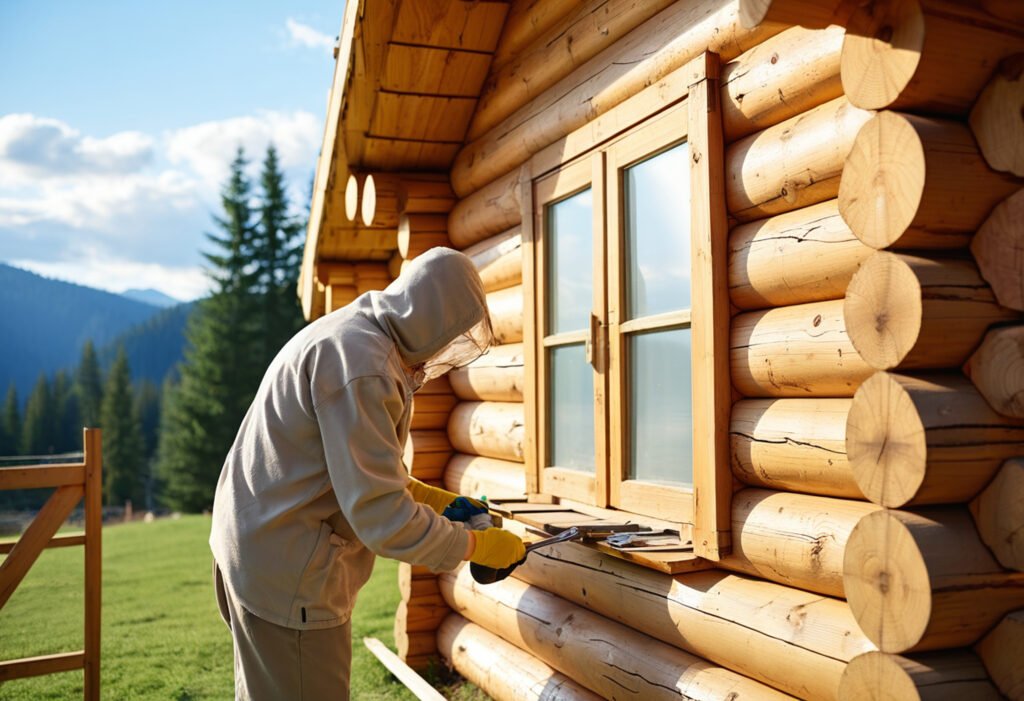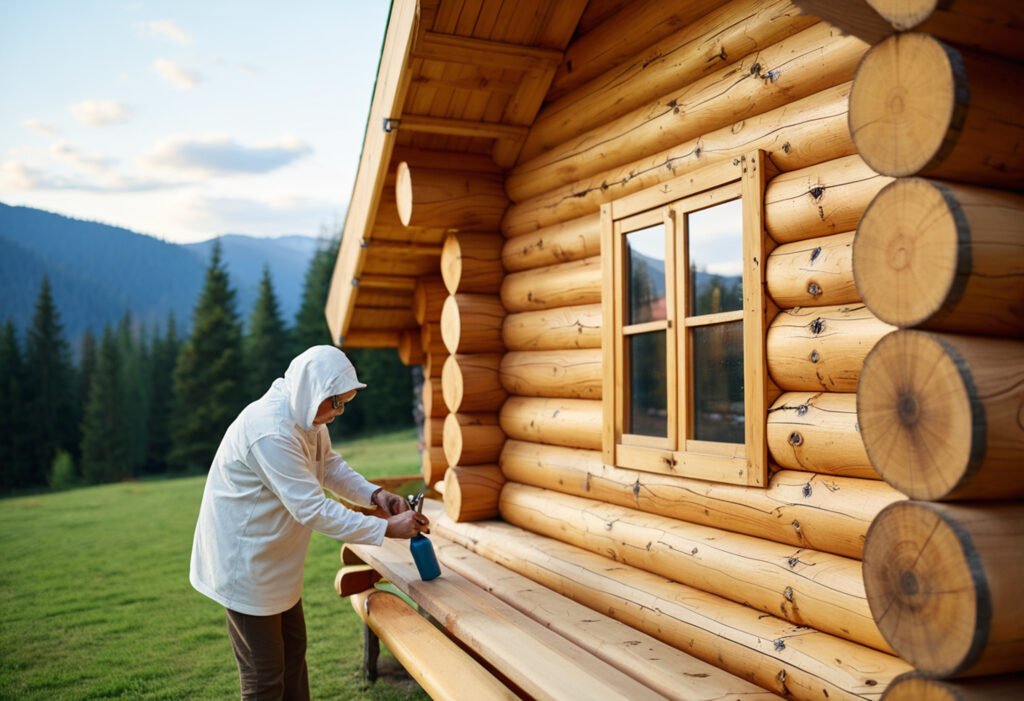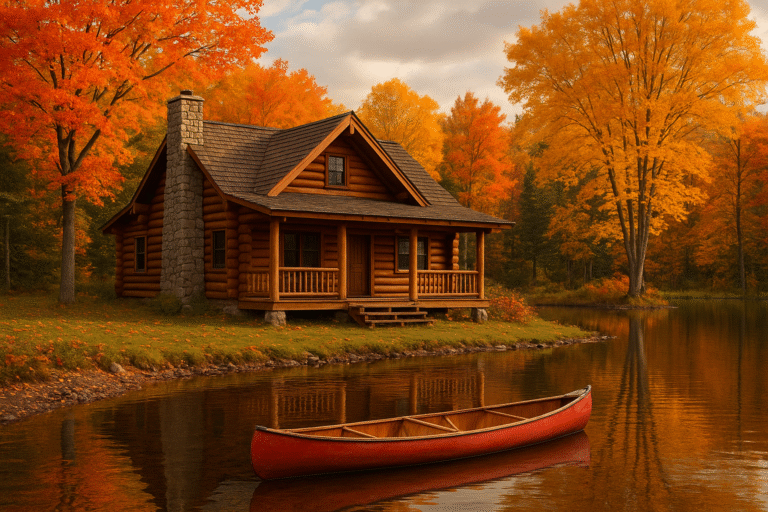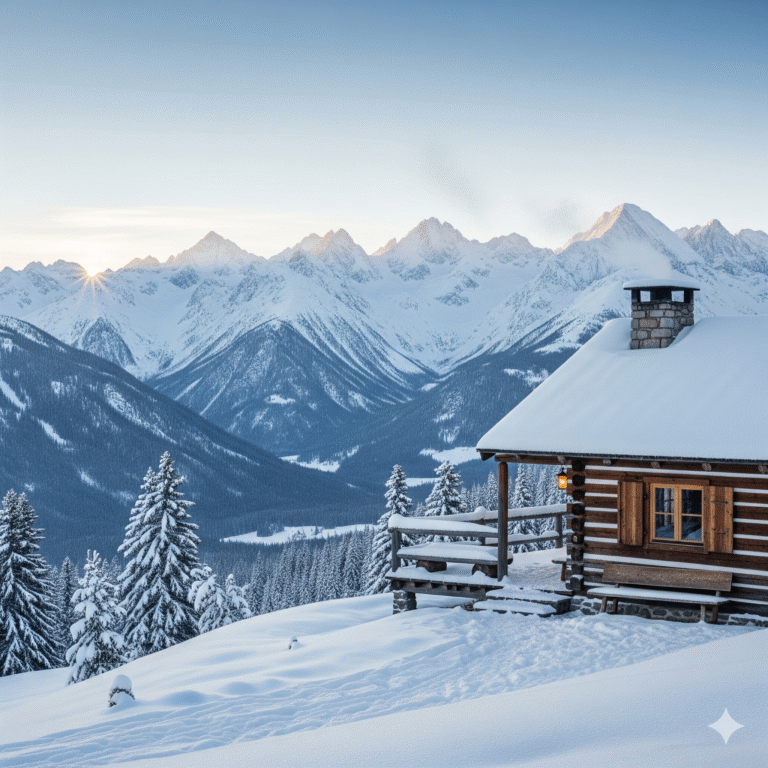How to Seal Your Log Cabin: Expert Guide for All Weather Protection
Log cabin sealing serves as your best defense against moisture—the biggest threat to any log home. Your logs need to maintain a moisture content of around 14-15% to stay healthy and structurally sound. Logs that absorb too much moisture beyond this level become easy targets for serious issues, such as mildew, mold, blistering, and ultimately, log rot.
Log homes can develop gaps that let wind, cold air, or moisture seep into your living space, no matter how well they’re insulated. To properly seal a log cabin, you need to ensure its beauty and structural integrity are protected. Our experience with log homes shows that sealing exterior surfaces works best with specific techniques and materials, especially when you have joints that need complete protection. A well-designed roof overhang can save you from countless maintenance issues down the road.
This piece will teach you the quickest ways to seal your log cabin in any weather. We’ll walk you through everything from picking the right sealants to keeping your cabin protected as seasons change. You’ll learn about maintaining a log cabin that stays comfortable, energy-efficient, and protected for decades.
Understanding Climate Impact on Log Cabin Sealing

Your log cabin’s climate plays a vital role in its performance and protection needs. The climate around your cabin is a big deal as it determines the right sealing approach to protect it long-term.
How different climates affect log cabin performance
Log homes interact with their surroundings differently than traditional homes do. The massive wooden walls work like “thermal batteries” that store heat during warm periods and slowly release it when temperatures drop. Location makes a big difference in this thermal mass effect. The energy efficiency improvements range from a modest 2.5% in cold regions like Wisconsin to 48% in milder climates like Southern California.
Log cabins handle temperature changes really well. Studies from both Canadian and American researchers show that well-built log homes can match or outperform conventional stick-frame houses in energy efficiency. Solid log walls provide steady insulation across the surface without facing the degradation problems that plague traditional insulation materials.
Why sealing needs vary by region
Builders in cold climates just need specialized sealing strategies that focus on heat retention and protection against freeze-thaw cycles. Urethane-based sealants work best in these areas and last 5-7 years between applications.
Humid environments call for moisture-resistant approaches above everything else. These regions benefit from naturally decay-resistant woods paired with complete moisture management systems. Water-based sealants do the job but require new applications every 3-5 years in high-humidity areas.
Hot, dry climates create their own set of challenges. Wood cracking and warping under intense sun exposure becomes your biggest problem. Light-colored roofing materials that reflect more sunlight help reduce heat absorption.
Common weather-related threats to log homes
Several environmental factors can damage your cabin’s structure:
- Moisture intrusion – Logs become vulnerable to mildew, mold, and rot when their moisture content rises above 15%
- UV radiation – Sunlight breaks down lignin (the natural glue holding wood fibers together) and leaves logs open to water damage
- Temperature fluctuations – Repeated freezing and thawing make wood expand and contract, which creates cracks and gaps
- Wind-driven rain – Small openings let rain penetrate and damage log surfaces over time
Learning about these climate-specific challenges helps you create an effective log cabin sealing strategy that fits your region’s unique conditions.
Choosing the Right Sealants and Materials
Your log home’s longevity depends on choosing the right sealants. Log cabins need specialized materials to protect against the elements, unlike conventional homes.
Types of sealants: caulk, chinking, and foam
The market offers several sealant options designed for specific applications. The six main types of caulks include butyl, oil-based, ethylene vinyl acetate, urethane, silicone, and acrylic/latex. Big-box stores might stock generic caulking, but these products rarely work well for log homes.
Many people mistakenly choose silicone caulk that doesn’t bond well with wood. While silicone works great on non-porous materials like metal and glass, it fails to stick to wood’s porous surface. Premium acrylic/latex sealants such as Perma-Chink, Energy Seal, and Check Mate 2 deliver better results for log structures.
Chinking creates a protective barrier between logs to seal larger gaps. Modern chinking products stay flexible for years and maintain their elasticity to avoid premature cracking. Urethane foams provide excellent insulation for substantial voids, though you must apply them carefully.
Best sealants for humid, cold, and dry climates
Urethane-based sealants perform best in cold regions because they cure even at low temperatures. Rain won’t affect these sealants shortly after application. Water-based acrylic sealants work well in moderate conditions but need 1-4 hours of rain-free weather after application to adhere properly.
How to select stains for UV and moisture protection
Compatible stains are the foundations of protection and should be applied before sealing. Products like UV Guard contain advanced UV absorbers that protect wood from sun damage while letting it breathe naturally. Your stain and sealant must be compatible to achieve optimal results.
Sealing log cabin joints vs. sealing log cabin exterior
Joint sealing demands specific techniques. Energy Seal offers outstanding elongation and adhesion around window and door frames as your home settles. Check Mate 2 works best to fill upward-facing cracks and prevents water collection. The sealant thickness should be about half the gap’s width, and it should never be more than 3/8 inches thick.
Moisture Control and Insulation Strategies
Water poses the biggest threat to log homes. You need detailed moisture control strategies that go beyond just sealants.
Using overhangs and gutters to manage water
Your cabin’s first line of defense against moisture comes from extended roof overhangs. Single-story homes need overhangs of at least 24 inches. Walls taller than 12 feet require 36-inch overhangs. These large eaves work like an umbrella and keep water away from the log walls. Sturdy gutters with downspouts direct rainwater away from the foundation. Homes in wooded areas should have gutter guards to prevent clogging.
Foundation waterproofing and drainage systems
The first log course needs to sit at least 12 inches above ground level to control moisture effectively. This height should increase to 18 inches in areas that get heavy snow. A proper foundation should have:
- Grading that moves water away from the structure
- Clean gravel backfill that drains quickly
- Waterproof membranes on foundation walls that let moisture escape
- Small trenches (swales) that redirect water flow
Thermal mass and insulation: working together
Log walls act as “thermal batteries” that store heat during warm periods and release it as temperatures drop. This thermal mass effect can reduce overall energy costs by approximately 30% compared to standard homes. Eastern White Pine with low moisture content provides better insulation while storing energy efficiently.
Advanced sealing techniques for energy efficiency
Apply sealants after staining to maximize energy efficiency, unless you want a seamless look. The sealant’s thickness should be half the gap’s width, but never more than 3/8 inch. Larger gaps need backer rod before you apply caulk.
Maintenance Tips for Long-Term Protection

Systematic attention throughout the year and regular maintenance are the lifeblood of log cabin longevity.
How to maintain a log cabin through seasonal checks
You should walk around your cabin’s exterior twice a year, preferably in spring and fall. This helps you spot potential risks before they become serious problems. Your inspection should focus on areas vulnerable to water intrusion—end logs, chimney flashing, roof junctions, dormers, and points where logs meet decks, windows, and doors. Photos taken during these inspections serve as valuable references to track changes.
When and how to reapply sealants and stains
A simple water spray test reveals your stain’s effectiveness—properly sealed surfaces will bead water instead of absorbing it. Semi-transparent stains need reapplication every 3-5 years, while solid stains last 7-10 years based on exposure. The cabin’s south and west-facing walls need more frequent treatment because they face more sun exposure.
Cleaning techniques to preserve wood integrity
A mild detergent and a soft brush work better than pressure washers that can force moisture into the wood. The best time to clean logs is during warm weather, so water can evaporate from cracks and checks.
Monitoring for cracks, gaps, and air leaks
Look for new or widening checks regularly, especially in previously marked areas. You should fill gaps larger than 1/4 inch with closed-cell foam like Grip Strip, then apply caulk or chinking. Note that expanding foam should never touch wood directly because it leads to rot over time.
Conclusion
The most critical step to preserve your log cabin’s structural integrity and beauty over decades is proper sealing. We have emphasized in this piece how your investment stays protected from damaging elements by maintaining optimal moisture content between 14-15%. Your sealing strategy should align with the climate, whether you experience freeze-thaw cycles in northern regions or intense UV exposure in southern areas.
Premium sealants designed specifically for log homes make all the difference in long-term protection. Generic silicone caulks from hardware stores will fail on wooden surfaces, while premium acrylic/latex sealants deliver superior adhesion and flexibility. Your roof overhangs, gutters, and foundation waterproofing combine with these sealants to create a detailed moisture management system.
Properly sealed log walls’ thermal mass properties can cut energy costs by approximately 30% compared to conventional construction. This natural efficiency, paired with strategic sealing techniques, creates a comfortable living environment, whatever the outside weather conditions.
Log cabin owners should conduct inspections twice a year. Water beading tests indicate the right time to reapply stains and sealants—typically every 3-5 years for semi-transparent products and 7-10 years for solid stains. Walls facing south and west need more frequent attention due to greater sun exposure.
A log cabin owner must commit to maintenance, yet living in a beautiful, energy-efficient natural structure is nowhere near the effort required. The knowledge from this piece helps you protect your log home against your region’s weather conditions and ensures your cabin remains a cherished retreat for generations.







